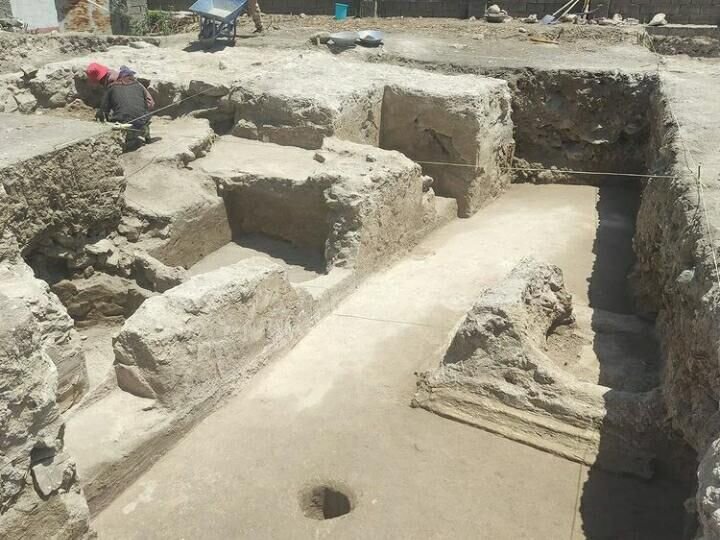Archaeological dig uncovers ruins of Sassanid temple in northern Iranian village

TEHRAN—A team of archaeologists in northern Iran has unearthed parts of a previously discovered fire temple, estimated to date from the Sassanid era (224 CE–651).
Located in Arfa Deh, a mountainous village in Savadkuh county of Mazandaran province, the fire temple is believed to be abandoned in the early Islamic era “because there is no sign of deliberate destruction in this structure and the fire pit [of the temple] is found intact”, archaeologist Abdolreza Mohajerinejad said on Friday.
“The fire pit, which bears plaster decorations, was discovered in the center of this building, which points to the religious usage of the building.”
According to the architectural evidence, this fire temple was used until the 3rd century AH and several sections were added to it in several phases, Mohajerinejad said.
Having the famed structure of Chahar-Taq (which is an ancient square-shaped room surmounted by a domed roof), the temple measures about 300 square meters and is made of stones, bricks (and a traditional mortar), the archaeologist added.
He said the ruined temple is located some five kilometers away from the cave of Sepahbod-Khorshid, which reportedly served as the latest Persian stronghold against the Arab conquerors in the region.
Initial traces of the temple were exposed some two years ago during the first archaeological season conducted on the Sassanid site, the report said.
Fire temple (locally known as Atashkadeh (“house of fire”) is a Zoroastrian term for a consecrated building in which there is an ever-burning sacred fire.
After the Arab conquest of Persia, the majority of Persian fire temples were all either demolished (the ruins, if any remained, having since generally disappeared) or replaced by mosques, some of which incorporated and effectively swallowed the older buildings.
The Sassanid era (224–651) is of very high importance in the history of Iran. Under Sassanids, Persian architecture and arts experienced a general renaissance. Crafts such as metalwork and gem engraving grew highly sophisticated, yet scholarship was encouraged by the state. In that era, works from both the East and West were translated into Pahlavi, the language of the Sassanians.
AFM
Leave a Comment